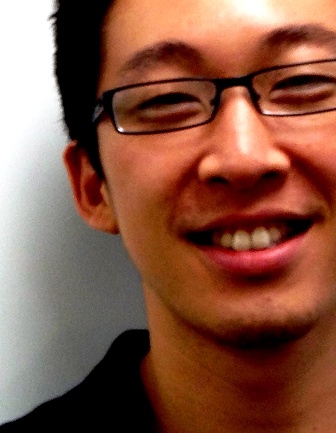This is a guest post by Jerry Jao, who has founded three companies, and is currently co-founder and CEO of Retention Science.
There are many different types of “pivots”. The Lean Startup book defines them as “structural course corrections,” which are designed to test a new fundamental assumptions about a product or business model.
Some of my friends believe pivots are permanent routines for any growing companies — even after they achieve early success. In our case, pivots are how we learned from failures of previous companies, and bounced back with a new and better idea.
In our four-year start-up journey, my co-founder, Andrew, and I pivoted twice before founding Retention Science. It was very difficult to walk away from the companies we worked so hard to build, but necessary because we did not see a sustainable future. While disappointed, we had to move on and start fresh.
In fact, with each pivot we grew more mature as founders, and we learned to focus on the things that really mattered. Here’s what we learned:
Our first pivot: A lesson in letting go
Our first company was a platform that enabled independent artists to promote niche brands and products via social media. After months of sponsoring local concerts, meeting American Idol contestants, and working with top YouTube celebrities, we failed to develop an easily scalable business.
Gaining traction was difficult, since prospective clients were not as excited as we were about our startup’s value proposition. In addition, a survey of existing clients indicated that they were reluctant to appear as sellouts by promoting brands.
Ultimately, the pain point we were solving wasn’t as painful to our users as we expected.
It was a week before Christmas when I told my cofounder Andrew, “This is not working.” I could see the disappointment in his eyes, and I will always remember that look of defeat. I knew he had pushed himself day and night to develop every feature we thought was needed, yet all that work seemed to amount to nothing. It was not easy to let go.
We learned a few things after shutting down that company:
- We should have validated our ideas with users before we committed to building a company
- The problem we were solving was not big enough to sustain a business
- We wasted time developing a platform with every imaginable feature. Start with a Minimum Viable Product and build it out using customer feedback.
Our second pivot: Move fast, outpace the competition
We took two weeks to recharge before starting our second company: a social media-based analytics and referral platform for e-commerce businesses. This time, we did things differently.
First, we made sure that there was a market for our product by speaking with e-commerce owners. Then, we started with a basic platform and added features based on user input.
Things started out well. We scaled our user base to hundreds of customers within six months. We even managed to land several large deals and brought in $20,000 per month at one point.
Meanwhile, we noticed an increasing number of competing businesses. It became clear that we needed to raise funding in order to expedite product development and increase our base of customers.
After several months of meeting with investors, we were told by experienced venture capitalists that since there were already several well-funded competitors, it was too late to join the race. Lack of funding severely limited our business growth, despite having customer traction.
Towards the end of the year, we evaluated our options given that we would not be able to raise venture funding and came to a conclusion: We had to pivot yet again. The realization hit us even harder this time, because we knew we had been smarter and more efficient about how we started our second company.
We made sacrifices in every aspect of our lives, including never receiving a salary from the company in order to build a business that we hoped held a bright future.
After many sleepless nights, Andrew and I agreed again that we couldn’t afford to let everything we learned go to waste. We believed that we still had it in us to “go big or go home” and so … we pivoted.
Here’s what we learned after our second pivot:
- We should have researched our competitive landscape more to understand who are the existing competitors and newcomers backed with funding. It was very challenging for a team of two to compete at the same speed without the capital to expand our team.
- We needed to build a realistic forecast of resource needs. Despite having a revenue-generating business model, it took significantly more resources than we expected to scale our operation.
- Fundraising takes a long time. We were not familiar with the fundraising process, and while we had more customer traction than some of the other companies, we couldn’t prove to VC’s that with funding we can beat the competition.
Two pivots and plenty of sleepless nights later…
We learned a tremendous amount over those two and a half years and applied that knowledge and experience into building our current company.
This time around, we’ve done our best to validate our idea with potential clients, research the market opportunity, build a scalable business, and secure sufficient funding from the very beginning.
We’re very excited about the future ahead of us and feel incredibly lucky to work with dozens of talented individuals and investors who are just as committed as we are to realizing this dream.
Both Andrew and I agree that the toughest part is making that final decision to move on. It’s natural to feel upset and defeated — after all, this is something we’ve been living and breathing, day and night. But in time we know that our decisions to pivot were the right ones — and a brighter future awaits us.
As cheesy as it may sound, with each pivot comes greater lessons learned, and we are grateful for those tough decisions that led us to where we stand today.
 Jerry Jao is the co-founder and CEO of Retention Science, a Retention Automation Platform that enables online businesses to intelligently re-engage existing customers to maximize customer retention.
Jerry Jao is the co-founder and CEO of Retention Science, a Retention Automation Platform that enables online businesses to intelligently re-engage existing customers to maximize customer retention.
Earlier, Jerry was an analyst with Morgan Stanley, an engagement manager with BearingPoint Management Consulting (KPMG Advisory), and most recently an advisor to the CFO of Clear Channel, working on digital initiatives such as iHeartRadio.
Jerry is a graduate of UC Berkeley, where he received a B.S. in Business Administration and a full-tuition scholarship as an Alumni Scholar.
Follow him on Twitter @jerryjao.
VentureBeat's mission is to be a digital town square for technical decision-makers to gain knowledge about transformative enterprise technology and transact. Learn More

